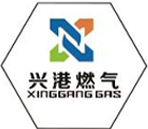
Nov . 12, 2024 22:14
Back to list
natural gas safety valve
Understanding Natural Gas Safety Valves An Essential Component for Safety
Natural gas is a widely used energy source, powering homes, businesses, and industries worldwide. However, with its many benefits come certain risks, particularly involving leaks and potential explosions. To mitigate these dangers, natural gas safety valves play a critical role. This article explores the significance, types, functioning, and maintenance of safety valves in natural gas systems.
What is a Natural Gas Safety Valve?
A natural gas safety valve is a critical device designed to protect gas systems from overpressure. In the event that the pressure in a natural gas line exceeds safe levels, these valves automatically release excess gas to prevent hazardous situations. By maintaining pressure within the specified limits, safety valves help ensure the safe and efficient operation of gas appliances and systems.
Importance of Safety Valves
The primary function of safety valves in natural gas systems is to prevent accidents. Natural gas is highly combustible; even a minor leak can lead to catastrophic consequences. Safety valves help minimize the risk of gas buildup, which can ignite and cause explosions. Moreover, they also play a significant role in protecting equipment and infrastructure from damage caused by excess pressure. The failure of a gas system can lead to costly repairs, making safety valves vital for both human safety and economic efficiency.
Types of Natural Gas Safety Valves
There are various types of safety valves designed for different applications within natural gas systems
1. Relief Valves These valves open to release gas when the pressure reaches a predetermined level. They are typically used in storage tanks and pipelines.
2. Safety Shut-off Valves These automatic valves stop the flow of gas when a leak is detected or when pressure exceeds safe levels. They are often integrated with monitoring systems for real-time safety assessments.
3. Check Valves These valves prevent backflow, ensuring that gas flows in one direction only. They are crucial in preventing contamination of the gas supply and maintaining pressure stability.
natural gas safety valve

4. Regulating Valves These valves control the pressure of gas entering a system, ensuring that appliances receive gas at the appropriate pressure levels.
Functioning of Safety Valves
Safety valves function based on pressure differentials. When the pressure within a gas system exceeds the set limit, the valve’s mechanism is triggered. For relief valves, this typically involves a spring-loaded design that opens at a specific pressure threshold. Safety shut-off valves are often electronically controlled and can be equipped with sensors that detect abnormalities in pressure or gas flow. Once the unsafe condition is rectified, the valves can be manually reset or will automatically return to operational status.
Maintenance of Safety Valves
Regular maintenance is essential to ensure the reliable functioning of natural gas safety valves. Here are some key maintenance practices
1. Routine Inspections Regular checks for signs of wear, corrosion, or leaks can help identify potential issues before they become critical.
2. Testing and Calibration Safety valves should be tested periodically to ensure they open and close at the specified pressure levels. Calibrating the valves according to manufacturer specifications is crucial.
3. Cleaning Dust and debris can affect valve operation. Regular cleaning helps maintain functionality and prolongs the life of the valve.
4. Documentation Keeping detailed records of inspections, tests, and maintenance helps ensure compliance with safety standards and regulations.
Conclusion
Natural gas safety valves are indispensable components that contribute significantly to the safety of gas systems. By effectively managing pressure and preventing leaks, these valves protect lives and property. With the right understanding of their types, functioning, and maintenance, stakeholders can ensure that their natural gas systems operate safely and efficiently. Investing in the proper maintenance of safety valves should be a top priority for anyone involved in the natural gas industry.
Next:
Latest news
-
Safety Valve Spring-Loaded Design Overpressure ProtectionNewsJul.25,2025
-
Precision Voltage Regulator AC5 Accuracy Grade PerformanceNewsJul.25,2025
-
Natural Gas Pressure Regulating Skid Industrial Pipeline ApplicationsNewsJul.25,2025
-
Natural Gas Filter Stainless Steel Mesh Element DesignNewsJul.25,2025
-
Gas Pressure Regulator Valve Direct-Acting Spring-Loaded DesignNewsJul.25,2025
-
Decompression Equipment Multi-Stage Heat Exchange System DesignNewsJul.25,2025

